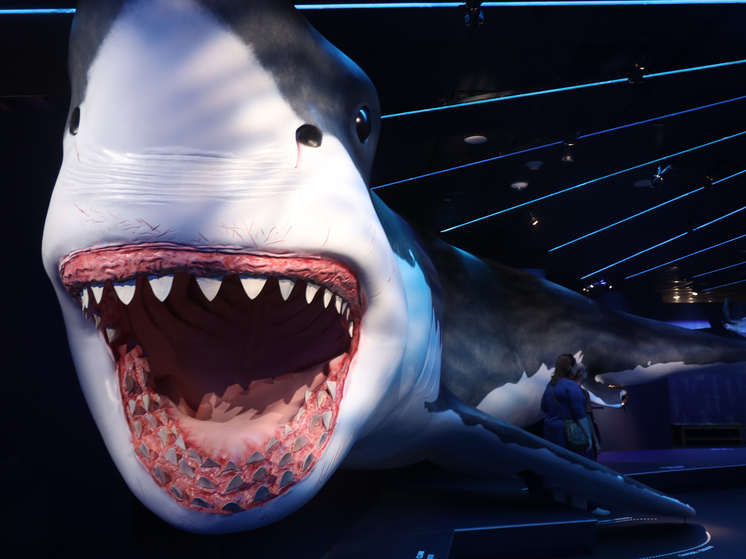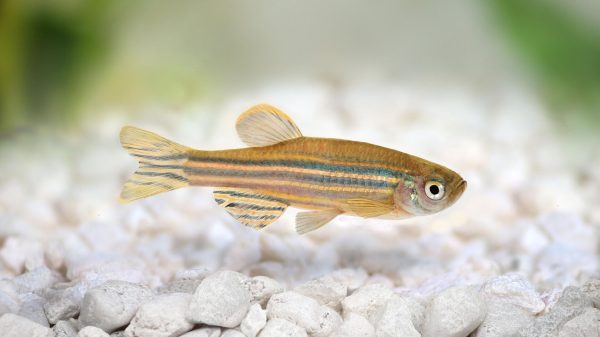“It was one of the greatest ocean predators of all time.”
Researchers suggest that a depiction of the prehistoric giant megalodon based on the proportions of a great white shark may have been mistaken. Now experts say the giant prehistoric megalodon shark may have been slimmer than previously thought.

Scientists say past reconstructions of the extinct animal, also known as the megatooth shark, were flawed because they were based on the assumption that its body shape resembled a larger version of the great white shark, the largest living predatory fish on the planet.
As The Guardian reports, the team says instead that new analysis of measurements from an incomplete set of megalodon's fossil vertebrae suggests it looked somewhat different, with a longer, slimmer body.
“Our study suggests that the modern great white shark may not necessarily be a good modern analog for estimating at least certain aspects of its biology, including its size,” said Professor Kenshu Shimada, a paleobiologist at DePaul University in Chicago and senior author of the study. .
But, he added: “The reality is that we need to find at least one complete megalodon skeleton to be more confident about its true size, as well as its body shape.”
In a paper published in the journal Palaeontologia Electronica, Shimada and colleagues report that in an earlier study, the measured vertebral column of an incomplete fossil megalodon was 11.1 meters in length. However, another paper suggested that the length of the same fossil, estimated from the proportions of a great white, was 9.2 meters.
Among other issues, the team notes that in some cases a juvenile great white was used as a model for megalodon , while there are also discrepancies between the ratio of jaw length to vertebrae in the two species.
Together with recent research, including estimates of the prehistoric monster's cruising speed, the team concluded that it was a mistake to model the megalodon's body shape on the proportions of a great white, and that the analysis shows that the prehistoric beast was more elongated.
“However, the slender body indicates that Megalodon may not have been as strong a swimmer as the modern great white shark,” notes Professor Shimada, adding that this observation is consistent with his recent study suggesting that Megalodon may have been a slow-moving shark that occasionally “swims in spurts” to capture prey.
“Because megalodon is one of the largest predators to ever exist, deciphering megalodon biology is critical to understanding the role played by large predators in the context of the evolution of marine ecosystems, and how its extinction affected the development of the modern ocean,” the scientist said.
Professor John Hutchinson of the Royal Veterinary College, who co-authored some of the studies criticized in the new paper, said his team not only used the proportions of a great white shark to help reconstruct the body shape of megalodon, but also used the sizes of other sharks, while the new study does not prove this possibility. approach is inappropriate.
“They do not refute our hypothesis, they call it into question,” he emphasized.
Hutchinson added that the new study, paradoxically, also relies on comparisons with great white anatomy, but does not offer alternative estimates of megalodon size.
Essentially, he said, the work does not change the fact that Megalodon was a huge, fearsome shark. “It was one of the greatest ocean predators of all time,” he said. “He was absolutely terrible.”
Megalodon is not the only prehistoric beast whose appearance has evolved over time, notes The Guardian. Here are some others.
With a huge body, huge teeth and sharp claws, Tyrannosaurus rex was a formidable predator. However, it wasn't as fast as movies like Jurassic Park suggest. A study published in 2021 suggests their walking speed was just under 3 mph, while another study in 2011 estimated their maximum jogging speed to be around 25 mph.
< p>Overall, while dinosaurs became big, the mammals that lived alongside them became small. But it was not always so. Velociraptors were the size of turkeys, while studies have shown that some mammals were the size of a badger or dog.
Some dinosaurs were terrifying meat eaters, but mammals weren't necessarily shy. A newly discovered fossil shows a mammal attacking a dinosaur, while others show the same mammal species with the bones of a baby dinosaur where its stomach would have been, suggesting it was a meat snack.
“The books I read as a child in the 80s and 90s portrayed dinosaurs as green, scaled animals, but the discovery of feathered dinosaur fossils in China in the mid-1990s showed that many dinosaurs would have been much more “more like birds,” says the professor. Steve Brusatte, paleontologist at the University of Edinburgh. “This is a shocking change of image.”
























































Свежие комментарии